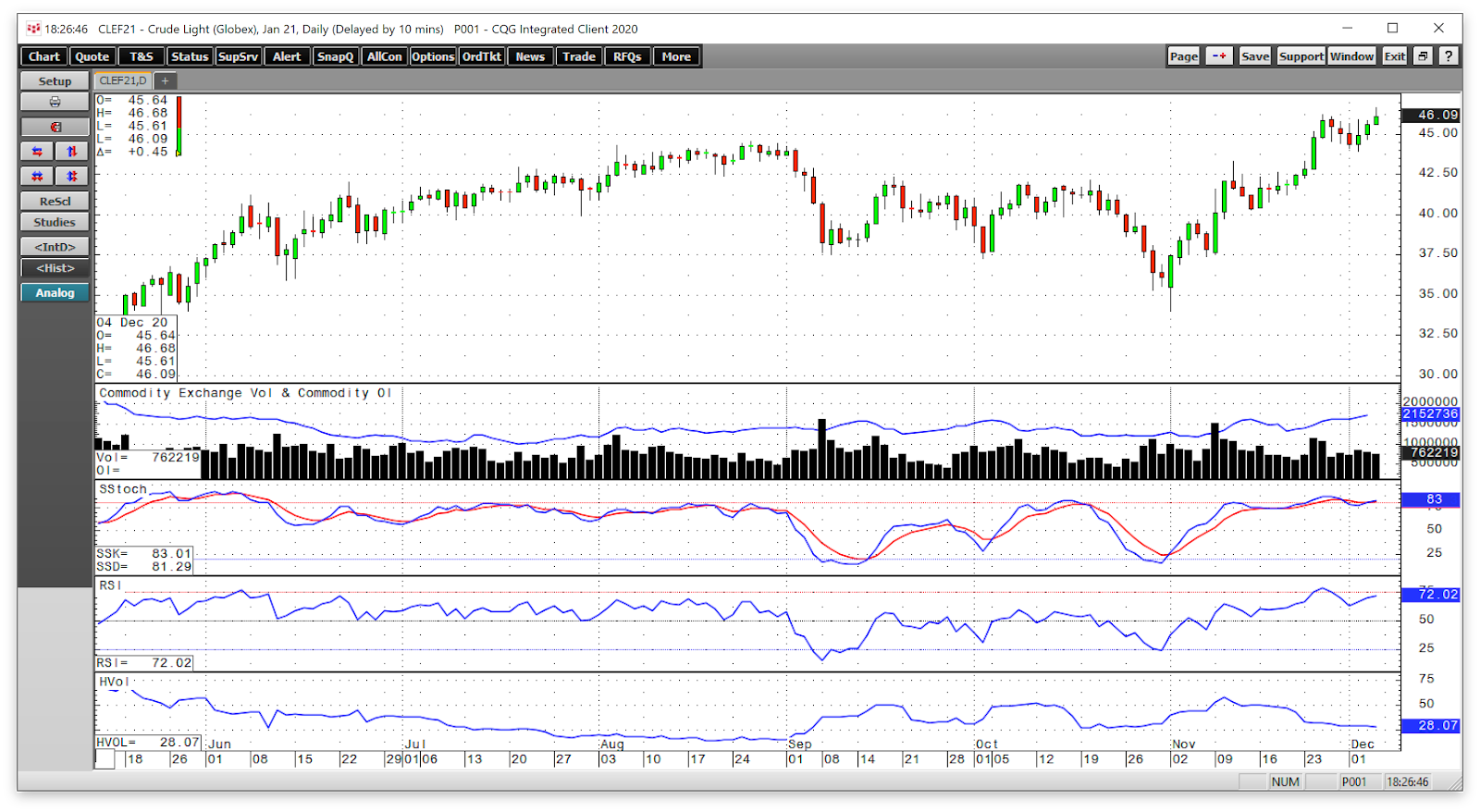-
OPEC+ tapers and extends output cuts into 2021: The market breathes a sigh of relief
-
Crude oil continues to sit near the recent high
-
Expect a significant taper in 2021 as the U.S. dollar, liquidity, stimulus, and U.S. energy policy are all bullish for the price of the energy commodity
OPEC officially meets twice each year in early winter and late spring. Since 2016, the Saudi-led oil cartel has been taking its marching orders from Russian oil minister Alexander Novak and President Vladimir Putin. When crude oil declined in 2016, the Russians saw an opportunity to expand their influence in the Middle East by taking an active role and cooperating with the international oil cartel. Acting as a bridge between the Saudis and Iranians, mortal enemies in the region, Russia became the most influential force in the cartel without being a member. OPEC has not made a move over the past years without Russia’s blessing.
In early 2020, the global pandemic and a disagreement between the Russians and Saudis over output sent the price of NYMEX oil futures to the lowest price in history and Brent futures to this century’s lows. An agreement to cut production by a historic 10 million barrels per day balanced the supply and demand equation. OPEC+ tapered its output cut to 7.7 mbpd, a level that stood as they met on Nov.r 30 for their biannual gathering but could not agree on the course for the coming months.
On Dec. 1, OPEC+, which includes Russia, delayed its meeting until Thursday, Dec. 3, to build more consensus for a path forward. The United States Oil Fund (NYSE:USO) tracks the price of NYMEX futures, and the United States Brent Oil Fund (NYSE:BNO) follows the price of Brent oil futures that trade on the Intercontinental Exchange (NYSE:ICE).
OPEC+ Tapers, Extends Output Cuts Into 2021
The delay in an agreement came from a disagreement by two OPEC members; Saudi Arabia and the UAE. The Saudis favored continuing the 7.7 mbpd output cut, while the UAE supported tapering the quotas as the price of crude oil has been stable and rising.
On Dec. 3, with the help of the Russians, OPEC+ agreed to taper the output cuts by 500,000 barrels per day in January. The cartel and other producers will also taper by the same amount in February and March but will meet each month to potentially adjust the level.
The oil market breathed a sigh of relief after the OPEC news broke on Dec. 3 as memories of the production standoff earlier in 2020 pushed the price of NYMEX futures into negative territory for the first time in history. A 7.2 mbpd production cut in January 2021 was welcome news for the NYMEX futures market at the end of last week.
Crude Oil Continues To Sit Near Recent High
The bullish trend in crude oil continued through the end of last week.

Source: CQG
As the chart shows, the oil January 2021 NYMEX crude oil futures closed at the $46.26 per barrel level on Dec. 4, after trading to a new high of $46.68 on Friday. January futures made a substantial comeback, rising from a low of $34.04 on Nov. 2. In under one month, the price rose by over 37%.
The total number of open long and short positions in the NYMEX futures market has been rising with the price of the energy commodity since early November, technical validation of the bullish trend. Price momentum and relative strength indicators are near overbought territory, with the price of oil futures near the highest price since early March. Daily historical price volatility at the 28.07% level indicates that the price continues to take the stairs to the upside.
Expect Significant Taper In 2021 As Dollar, Liquidity, Stimulus U.S. Energy Policy Are Bullish
With vaccines on the horizon and the rising potential for worldwide herd immunity to COVID-19 in 2021, energy demand should rise. Expect OPEC+ to continue to taper its production cuts through the coming year. The most significant cuts could come in the spring as the peak season for gasoline consumption arrives.
Meanwhile, OPEC+’s tapering may not stop the ascent of the crude oil price next year. The dollar index continues to trend lower, which is a bullish factor. Central bank liquidity and government stimulus programs increase the money supply and debt levels at a record pace, creating inflationary pressures. Inflation erodes fiat currencies’ purchasing power, which pushes all commodity prices higher, and crude oil is no exception.
Meanwhile, a stricter regulatory environment under the incoming Biden administration is likely to decrease fossil fuel production in the U.S. The March peak of 13.1 million barrels per day of U.S. output is likely to stand even if demand increases as the virus fades into the world’s rearview mirror. Moreover, the recent assassination of Iran’s top nuclear scientist is a reminder that the region of the world that is home to more than half the world’s crude oil reserves remains highly turbulent and could impact supplies and logistics.
The economic and political landscapes support the crude oil price in the aftermath of the latest OPEC+ meeting and the cartel’s decision to marginally taper the production cuts next week.
